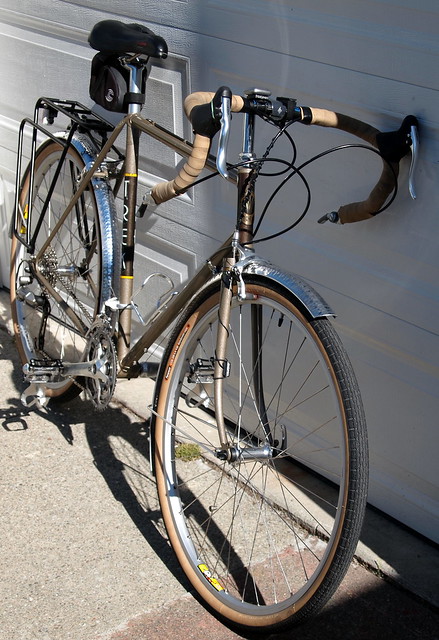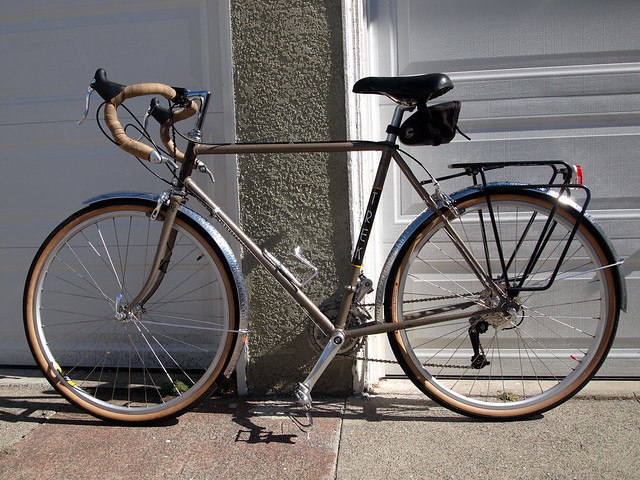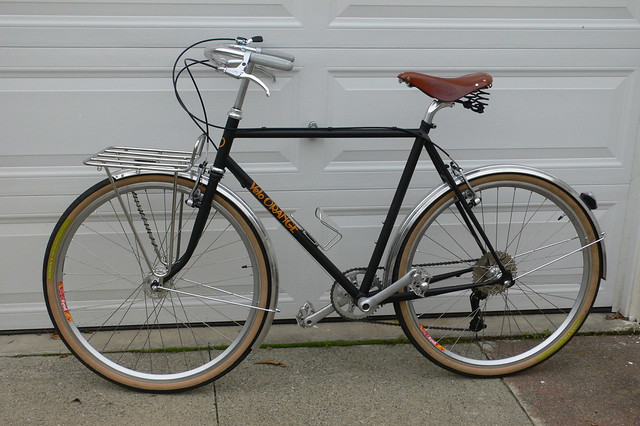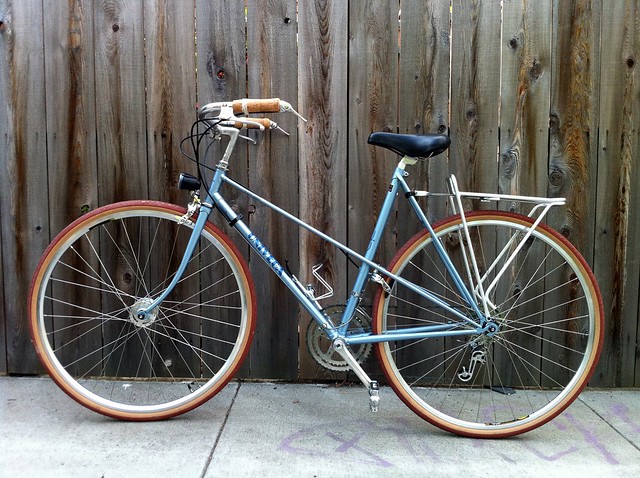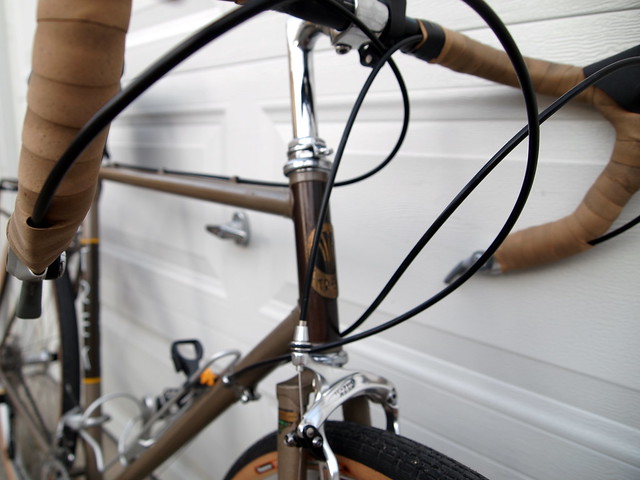 |
| Brown head tube and matching panel on seat tube |
The paint is in mostly good conditions. The taup paint on main triangle and most of the stays and forks still sparkle but significant paint chips can be found on the chain stays, especially at the kickstand area and the drive-side. I sprayed these areas with a satin-finish clear coat before assembling the bike. The frameset itself has some very nice details. The tubings (main triangle, stays, and fork blades) are Reynolds 531, with these following thicknesses and diameters (see this page in the brochure):
seat tube 8/5 1 1/8"
top tube 8/5/8 1"
down tube 10/7/10 1 1/8"
 |
| Unfendered here in a front 3/4 portrait |
I had planned on building this bike to be a 650b conversion to allow use of metal fenders and wide tires. We sold M's 620 to a friend as a near complete bike (sans crankset, seatpost, front rack, and saddle), so I have to gather parts for the build. The most significant addition is a pair of wheels built by Charlie at Lakeview Bicycle, a new bike shop on the Lake in Oakland that stocks many BOBish parts. Other new parts include metal fenders, and chain and cassette. Most parts came from my parts bin. Here is the complete parts list:
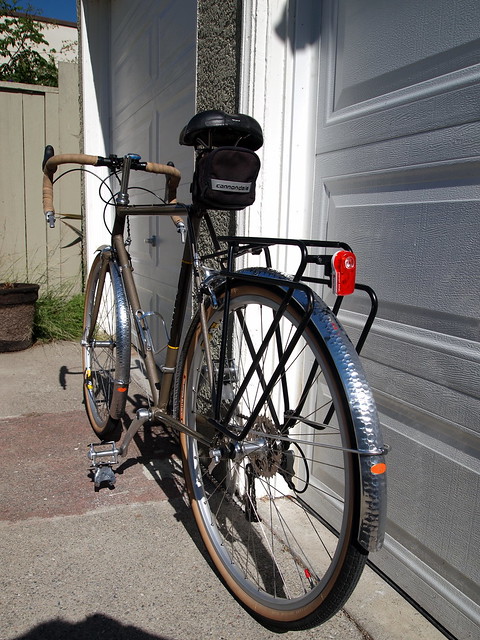 |
| The Tubus rack on VO fenders |
- original headset (overhauled)
- Origin8 quill stem; 1"; 26mm clamp; 8cm reach
- Deda Newton 42mm handlebar; black; a gift from a friend
- Tektro R200 brake levers
- Shimano 9-speed bar-end shifters
- Soma tan bar tape
- Sugino XD2 165mm crankset 46/36/26T
- Shimano HG50 9-speed cassette 12-32T
- SRAM 9-speed 971 chain
- Tektro R556 long reach (55-73mm) sidepull brakes
- Shimano LX mega-range rear derailleur
- Shimano XT front derailleur
- Shimano Tiagra hubs laced to Weinmann ZAC19c rims; 32 spoke holes
- Panaracer Col de la Vie tires (measured 36mm on these rims)
- Shimano Ultegra seatpost
- Terry Liberator Ti saddle
- Tubus Logo rear rack
- Velo Orange hammered 45mm fenders for 650b wheels
- generic water bottle cage
The build is mostly pretty straight forward, but I did have to stumble through a couple of places:
1. the rear brake caliper barely reach the rim. Turning the adjustment screw helped some
2. similar to the 620, the chainstay bridge is placed too far forward to create a decent fender line. I used a 1/2" "spacer" to bring it closer.
3. Weinmann rims are a little oversized, so to mount the tires evenly I use soap water along the tire bead and inflate them to 110 psi before deflating it to the proper pressure. This seems to work OK; Charlie warned me about this before building the wheels up
4. I have to mount the rear fender stays on the Tubus rack (which has a pair of non-threaded eyelets on it) because otherwise the bolt will interfere with the chain when the chain is on the smallest cog.
